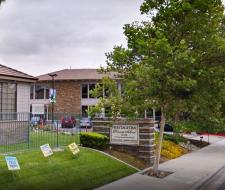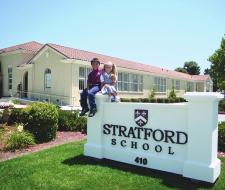Private schools in State of California - 3 yo
-
 According to information for 2019, an average ACT score made up 28
According to information for 2019, an average ACT score made up 28 USALos Angeles, CaliforniaCurrently watching: 9
USALos Angeles, CaliforniaCurrently watching: 9 -

-

-
 "5th Highest Performing School by A Level results in 2023" – The Telegraph.
"5th Highest Performing School by A Level results in 2023" – The Telegraph. United KingdomYorkCurrently watching: 10
United KingdomYorkCurrently watching: 10 -
 In 2023 100% of students achieved A*– B grades at A-level
In 2023 100% of students achieved A*– B grades at A-level United KingdomLondonCurrently watching: 7
United KingdomLondonCurrently watching: 7 -
 Future graduates of 2024 have already received 5 offers from Oxford and 11 from Cambridge
Future graduates of 2024 have already received 5 offers from Oxford and 11 from Cambridge United KingdomCoventryCurrently watching: 10
United KingdomCoventryCurrently watching: 10 -
 Students are accepted to top-100 universities
Students are accepted to top-100 universities USALos Angeles, CaliforniaCurrently watching: 6
USALos Angeles, CaliforniaCurrently watching: 6 -
 In 2022 - 66% of A Level students achieved A* - A
In 2022 - 66% of A Level students achieved A* - A United KingdomOxfordCurrently watching: 9
United KingdomOxfordCurrently watching: 9 -
 One of the most selective schools in the USA
One of the most selective schools in the USA USABoston, MassachusettsCurrently watching: 7
USABoston, MassachusettsCurrently watching: 7 -
 #1 school in UK and Top-1 worldwide for IB results in 2021
#1 school in UK and Top-1 worldwide for IB results in 2021 United KingdomCardiffCurrently watching: 10
United KingdomCardiffCurrently watching: 10 -
 In 2023 - 90% of A Level scores made up A- A*
In 2023 - 90% of A Level scores made up A- A* United KingdomOxfordCurrently watching: 7
United KingdomOxfordCurrently watching: 7
Studying at a high school in California is the best solution for those who would like to enter a California university: this way, at the time of submitting documents, your child will get a fairly good idea of the national culture, in particular academic, and will learn to speak English well. They, unlike applicants from abroad, will not need to take IELTS to confirm their level.
Alternative destinations
Benefits of Studying in Private Schools in California
- Independence and autonomy
Private schools in California are practically unlimited. Compulsory subjects include natural and social sciences, English and mathematics, sex education and the basics of hygiene, but everything else in the program can be anything from modern and ancient languages to a variety of expressive and visual arts. Therefore, schools in California are completely free to introduce programs used in Great Britain, France, Switzerland and other countries.
- Sport
Traditionally, sports are of great importance. In the United States, this is generally a very important thing both at school and at university. Most importantly, California schools work with young athletes at a high professional level, and universities then generously distribute scholarships to the most successful and talented, not limited to footballers, rugby and baseball players, but looking at a variety of sports.
- K-12: Flexibility and Practice-Oriented
The first 12 years of education (kindergarten and primary + secondary school) are combined into the K-12 model, the most popular modular educational model in the world. This system provides useful knowledge and competencies in real life, including in terms of physiology, intersexual relations, everyday life, such useful issues as academic writing, ethics and the correct formatting of citations.
Disadvantages and features of education in California private schools
- High cost
For foreign students, in 8 cases out of 10, there are special prices, significantly higher than for local students. An expat student needs to be ready to pay a very substantial amount for several years of study. It is understandable: there is no such thing as cheap good, high-quality education in a private school in California is expensive, but then fantastic opportunities open up.
- The need to change schools
In California, there is no single school system: first you need to study in elementary school, then in middle school, and only then in high school. Often these are completely different schools, although sometimes they are just different structural units. The child has to change several schools and each time get used to a new team and place.
How are California schools organized? Main
The Sunshine State has both public and private schools; The latter can be secular and religious, and the degree of religiosity varies, from a formal reference in the title to direct funding and the inclusion of a number of religious modules in the program. Private schools do not receive money from the state, and therefore can choose any program, for example, Waldorf or Montessori.
Foreigners can study in public schools only in high school, no more than a year and on exchange, or if their parents have a residence permit. Only private schools are available to everyone else.
Unlike in Canada and the UK, an expat student living without parents does not need professional guardians – a host family is enough. And, of course, you can live in a boarding school.
The full cycle of education lasts 12 years, secondary education is divided into 3 compulsory stages.
Primary school (5 years, from K1 to K5 inclusive)
At this stage, the child learns the basics in a playful environment: reading and writing, counting and taking care of himself, communicating with others. As they grow older, the program becomes more complex, supplemented by core disciplines, including mathematics, geography, native speech, and a block of natural science disciplines. As a rule, at this age, all subjects, except for foreign languages, music, creativity and sports, are taught by one teacher. They usually finish the "beginning" at the age of 10-11.
Secondary (K6-K8, 3 years) school
The compulsory program at this stage includes the already familiar disciplines of primary school, as well as foreign languages, computer science and history, and each subject is available at both basic and advanced levels. There are also elective subjects – usually they are related to culture, music, art, and the choice can be quite wide, from simple drawing to debate, Egyptology, indigenous culture of Polynesia or the history of modern dance. California private schools know how to surprise!
Transfer between classes takes place based on the results of tests, and they study here until the age of 14.
High school (K9-K12, 4 years old)
This stage is the most important, preparing teenagers for admission to higher schools. The curriculum includes English (an integrated course that combines literature, language and critical thinking skills), mathematics, a complex of natural sciences, history and physical education. As additional subjects, you can take those that will bring additional points upon admission, and the choice is quite wide — in some educational institutions, we are talking about hundreds of elective courses. Elective subjects can no longer be at two, but at three levels: along with basic and advanced, there are also university-level courses called Advanced Placement — they give additional credits upon admission.
There is also a kindergarten, it is divided into 2 stages - Nursery and Kindergarten. This is a kind of preparation for a real school: here they teach you to read, write and help you socialize. Some private schools in California have their own kindergartens.
High School Programs in California
High School Diploma, AP, and IB are the three most popular programs in Californian schools/
The usual school program in the United States lasts 4 years. There are no standard requirements or a national curriculum, and the California government is flexible in allowing schools to determine their own course content, setting only general framework requirements for average grades over the entire period of study, the need to demonstrate a certain attendance, and the form and methods of control of final exams.
Students who have coped with the program at a noticeably higher than average level (high GPA, additional foreign language and 3-4 years of AP level) can receive a certificate with honors (Honors) - such a document will be favored by the admissions committee and valued by employers.
- Advanced Placement
AP are university-level courses that a student can choose as elective disciplines to study in high school. You can study them instead of basic subjects or even in parallel with them - this way you can get additional points.
However, the benefits are not limited to points: such courses help to get an idea of the level of workload at the university, and after admission, in the first or second year, take advantage of the high base effect. The applicant has already taken the first necessary steps in the field of the chosen profession at school, not to mention the fact that such first-year students already know how to write and correctly format scientific papers, search, analyze and process information - in short, they receive a set of valuable soft skills.
Admissions committees at both public and private universities in California often favor AP graduates over others.
A popular international academic qualification. Unlike the previous ones, it's not just about high school: the IB is a complete secondary education program for children from 3-4 to 18 years old.
The program, on the one hand, is interdisciplinary in nature and differs from the High School Diploma or English A-level in a lower degree of predetermination — until graduation, students retain the opportunity to make a choice regarding the direction of further education or career. On the other hand, it is practice-oriented, and the main task of the teacher in such a model is not to force them to memorize significant amounts of information, but to teach them to solve problems, apply the knowledge gained in practice, adapt to circumstances and be able to learn independently.
Graduates of the IB Diploma program have an advantage over the previous two options – their diploma gives them the right to enter a higher school both in California (or any other state in the United States) and in other countries. However, if you have an IB diploma, you will still have to take the SAT or ACT.
There are also schools in California that offer A-levels, but these are rare.
Private schools in California: living conditions
Students who come to California can choose one of two accommodation options - boarding schools and professional host families, respectively. At the same time, if in the UK or Canada, a foreign child needs a guardian, even when studying at a boarding school, in the United States this is not necessary: the functions of an official representative are taken over by either the family where the child will live, or the director of the educational organization.
Guest families take children of any age, but boarding schools recruit at least sixth-graders, that is, from 11-12 years old, where they are looked after by professional educators (in addition to discipline, they make sure that the children feel good, help with homework and on any other issues). Usually these are teachers working at the school or professionals with specialized education and serious experience.
Children of the same age usually live together - in the same wing or on the floor, in shared bedrooms or dormitories for 2-8 people. This allows them to cope with the difficulties of the adaptation period with the least damage, find friends, and cope with the language barrier. At the same time, as in traditional British boarding schools, in California schools, older students often perform mentoring functions in relation to their younger comrades.
Tuition Fees in California Schools
A private school is not cheap. The situation is further complicated by the fact that California is one of the top 3 most expensive states - here, tuition, accommodation, and all related costs are higher than the national average. A year of tuition at a California private day school will cost at least $29,000, and at a boarding school it will be about $54,000-58,000. These are approximate prices - to find out the exact ones, contact Smapse specialists for advice.
However, there are many scholarship programs available, including to foreign students, so the total amount may differ from the declared one not only upward, but also downward.
Advantages and disadvantages of English schools
| Advantages | Disadvantages |
|---|---|
| The opportunity to enter the best universities in England, USA, Canada, Switzerland, Europe, the world | Expensive |
| High quality of education and academic standards | Strong workload |
| Perfect English after graduation | The need to change the social environment; it takes time to adapt |
| Useful contacts | The difficulty of choosing the most suitable school for the child, requires a qualified specialist |
Top 35 best schools in the USA - 2026 Smapse rankings
| 1 | North Broward Preparatory School |
| 2 | Phillips Academy Andover |
| 3 | The Storm King School New York |
| 4 | Red Bank Catholic High School |
| 5 | Windermere Preparatory School |
| 6 | Shattuck St Mary's School |
| 7 | Cheshire Academy |
| 8 | Cate School |
| 9 | Ross School |
| 10 | Deerfield Academy |
| 11 | The Village School |
| 12 | Amerigo Los Angeles – Bishop Montgomery High School |
| 13 | Webb Schools |
| 14 | Kent School USA |
| 15 | The Winchendon School |
| 16 | Darlington School |
| 17 | Marian Catholic High School Amerigo Education |
| 18 | Grier School |
| 19 | The MacDuffie School |
| 20 | CATS Academy Boston |
| 21 | The Cambridge School of Weston |
| 22 | Milton Academy |
| 23 | Amerigo Education Napa Valley |
| 24 | American Hebrew Academy |
| 25 | Northfield Mount Hermon School |
| 26 | Mater Dei Catholic High School San Diego Amerigo Education |
| 27 | American University Preparatory School Los Angeles |
| 28 | Webb Schools |
| 29 | Kent School USA |
| 30 | Groton School |
| 31 | Maine Central Institute |
| 32 | The Lawrenceville School |
| 33 | Grand River Academy Ohio |
| 34 | Saint John Paul II Academy |
| 35 | Chicago North Shore |
Top 14 best schools in Switzerland 2026
| 1 | College Du Leman |
| 2 | St. Georges School Montreux |
| 3 | Institut Monte Rosa |
| 4 | Lyceum Alpinum Zuoz |
| 5 | Saint-Charles Collège et Lycée |
| 6 | Leysin American School |
| 7 | Hochalpines Institut Ftan AG High Alpine |
| 8 | Aiglon College Switzerland |
| 9 | Institut Le Rosey School |
| 10 | Institut Montana Zugerberg |
| 11 | Champittet College |
| 12 | Brillantmont International School |
| 13 | Surval Montreux |
| 14 | Ecole Pre Fleuri |
